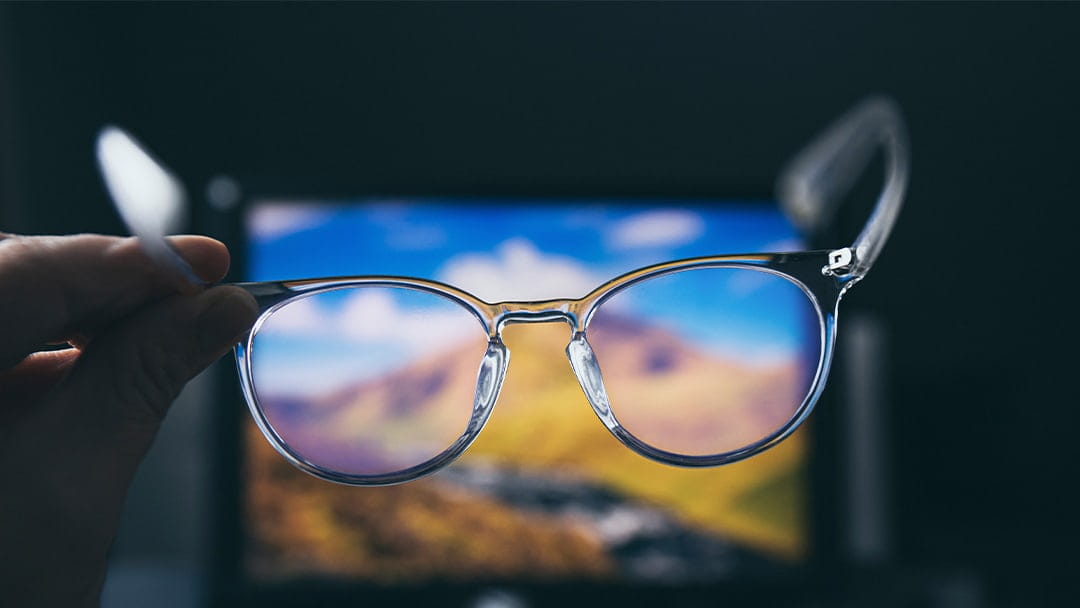Through the enchanting glow of a screen, we find ourselves entranced, captivated by the wonders that lie within the digital realm. From dazzling images to captivating videos, our devices keep us spellbound, connected to a world beyond our reach. But lurking amidst this mesmerizing allure lies an enigma yet to be unraveled – the mysterious power of blue light, weaving its way into our lives, silently affecting our well-being. As we venture deeper into this technological tapestry, it is time to embark on a journey to unlock the secrets and explore the magic of blue light filters. Join us as we peel back the layers, revealing a world where science meets sorcery, and where balance can be restored in the ethereal glow of our screens. The True Effects of Blue Light on Sleep and Eye Health

With the rise of technology in our daily lives, the harmful effects of blue light on our sleep patterns and eye health have become a growing concern. Blue light, emitted by electronic devices such as smartphones, tablets, and computer screens, has been found to disrupt our natural circadian rhythm, making it difficult for us to fall asleep at night. Numerous studies have shown that exposure to blue light in the evening suppresses the production of melatonin, the hormone responsible for regulating our sleep-wake cycle.
Understanding the Science behind Blue Light Filters on Screens
Fortunately, the science behind blue light filters offers a glimmer of hope in this digital age. Blue light filters work by selectively blocking the harmful blue light emitted by our screens while allowing other colors to pass through. This can help reduce the strain on our eyes and minimize disruptions to our sleep patterns. These filters use various techniques, such as software-based solutions or blue light blocking glasses, to shield our eyes from the damaging effects of blue light.
Practical Tips for Incorporating Blue Light Filters into Your Daily Screen Time Routine
Incorporating blue light filters into your daily screen time routine doesn’t have to be a hassle. There are simple steps you can take to protect your sleep and eye health. Start by adjusting the settings on your device to enable the built-in blue light filter, if available. This will automatically reduce the amount of blue light emitted by your screen, especially during the evening hours. Alternatively, you can opt for third-party apps or browser extensions that provide advanced blue light filtering options.
Optimizing Your Device Settings for an Enhanced Blue Light Filtering Experience
To enhance your blue light filtering experience, consider adjusting additional device settings. Increase the brightness of your screen during the day to mimic natural sunlight, but decrease it at night to reduce exposure to blue light. You can also experiment with warmer color temperature settings, as they tend to emit less blue light. Additionally, taking regular breaks from screen time and practicing good sleep hygiene, such as keeping your bedroom dark and free from electronic devices, can further optimize the benefits of blue light filters.
In conclusion, the enigma of blue light filters has been unraveled with scientific research highlighting their effectiveness in mitigating the harmful effects of blue light on our sleep and eye health. By understanding the science behind these filters, incorporating them into our daily screen time routine, and optimizing our device settings, we can harness the magic of blue light filters to protect our overall well-being in this digital era. As we draw the curtains on our exploration into the realm of blue light filters, it is clear that the enigmatic magic they possess is undeniable. Unraveling the mysteries hidden within this technological sorcery has revealed a world of captivating discoveries and eye-opening revelations.
Like skilled illusionists, these filters weave a fantastical weave of soft hues, shielding our eyes from the harsh glare that emanates from our digital companions. With an eloquent wave of their virtual wands, they effortlessly transform our screens into sanctuaries of tranquility, ushering us into a realm where our visual comfort reigns supreme.
But let us not forget the enchantment that lies beneath this visual illusion. Behind the scenes, these filters diligently flicker into action, meticulously adjusting the intensity, temperature, and wavelength of light emitted from our screens. Imperceptibly, they cloak us in a cloak of comfort, warding off the invisible peril lurking in the unforgiving depths of blue light.
Yet, amidst the wonders and marvels, we must remain mindful of striking a balance. For every spell cast by these filters, there is an equal and opposite counter-spell that needs to be considered. The scientific community dances a delicate tango with ongoing research to understand the potential consequences of this magic, urging us to ponder the long-term impact on our sleep patterns, overall health, and well-being.
As the curtain falls on our journey, we find ourselves in a state of wonderment and awe. The magic of blue light filters on screens is as elusive as it is captivating, as mysterious as it is comforting. It is a tale of enchantment that continues to captivate our curious minds, leaving us in anticipation of discovering what lies beyond the veil in the ever-evolving world of technology.
So, as you embark on your next digital adventure, armed with newfound knowledge and a deep appreciation for the sorcery of blue light filters, tread with caution, but embrace the magic. For in this mystical interplay between technology and well-being, lies the essence of our modern age – the enchantment that shapes, protects, and illuminates our screens and, ultimately, our lives.

